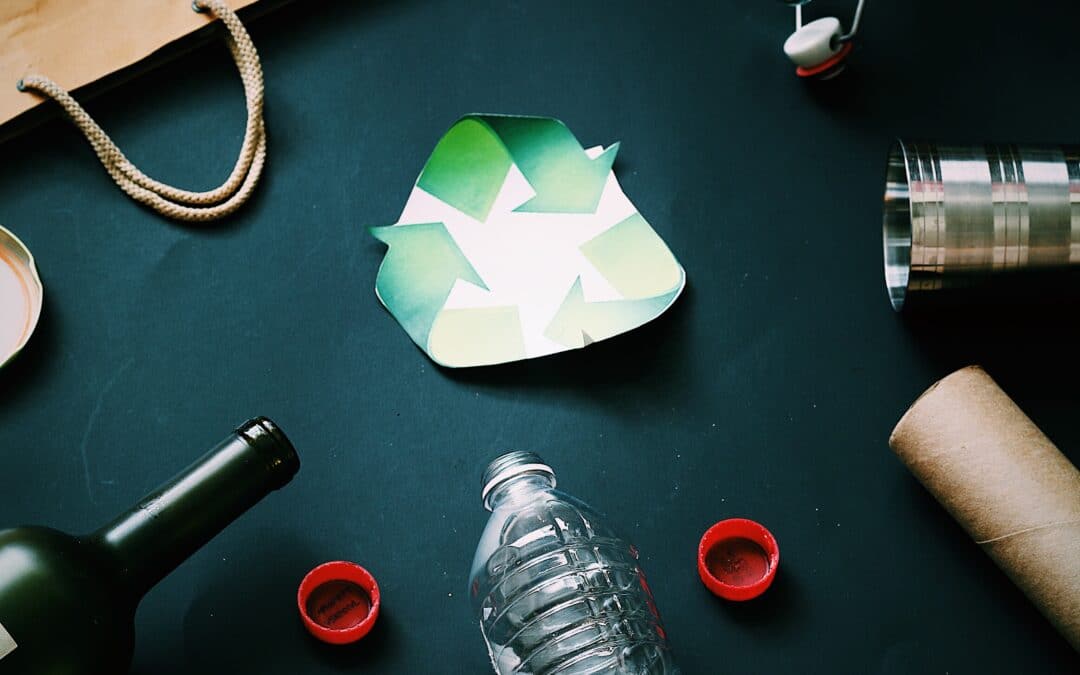En los últimos años, el reciclaje ha pasado a formar parte de nuestra vida cotidiana. ¿Cuántas veces escuchamos la palabra reciclar? Es posible que la veamos en carteles, periódicos, vallas publicitarias, envases, pero ¿realmente estamos reciclando adecuadamente? ¿Conocemos bien cuáles son los materiales reciclables?
En la actualidad, la importancia de reciclar cobra más fuerza cada día, sobre todo en estos momentos en los que la contaminación se acrecienta y las medidas para frenarla parecen ser insuficientes. Desde hace unos años, la cultura del reciclaje se ha puesto en práctica, sin embargo, no todos lo hacen y aún seguimos desechando objetos que pueden tener una segunda oportunidad (o tercera) de uso.
¿Qué son los materiales reciclables?
Un material reciclable es aquel que se puede utilizar de nuevo tras su uso principal, con el que es posible crear nuevos materiales para transformarlos dándoles un nuevo uso. Aunque también pueden volverse a utilizar para la misma función que tenían en un principio, por ejemplo, las latas de aluminio, el papel o el vidrio.
El proceso de reciclaje parte de una selección entre aquellos materiales que pueden tener otra oportunidad de uso y los que son desecho, tras ser depositados en los contenedores correspondientes. En las casas podemos colocar varios contenedores, uno para los desechos orgánicos y otros para los materiales que puedan reusarse.
Aunque no todo se puede reciclar, la reutilización de muchos objetos ha conseguido la disminución del volumen de desechos y grandes beneficios medioambientales.
¿Qué materiales podemos reciclar?
Existe una gran variedad de materiales que podemos reciclar, por ejemplo:
- Plástico, como las botellas plásticas de refresco, de agua mineral, envases, etc. Es importante resaltar que este es uno de los materiales más producidos a nivel mundial, aunque no todos los elementos plásticos pueden reciclarse.
- Envases metálicos.
- Aluminio en todas sus formas.
- Papel de periódico, revistas, cartones o folletos.
- Pilas o baterías.
- Aparatos electrónicos.
- Textiles.
Estos materiales que sí pueden reciclarse, se depositan en los contenedores correspondientes para tal fin:
- Contenedor amarillo: envases plásticos, bandejas de aluminio y latas, también el corcho blanco y poliespán.
- Contenedor azul: destinados para el papel, ya sea de periódico, revistas, folletos y cartón.
- Contenedor verde: se depositan los materiales elaborados de vidrio.
- Contenedor marrón (en algunos casos es anaranjado): se utiliza para los desechos orgánicos que son biodegradables, también se deposita el cristal (que no es lo mismo que el vidrio) como espejos y copas, la porcelana o la loza de un plato o taza.
- Puntos limpios o puntos verdes: donde se depositan las baterías y pilas, bombillas, basura electrónica, aerosoles, entre otros materiales que no pueden depositarse en los contenedores descritos anteriormente.
¿Por qué debemos enseñar a los niños a reciclar?
Es muy importante que los niños aprendan a reciclar, pero hay que enseñarles primero a clasificar los materiales. A partir de los tres años ya pueden empezar a hacerlo. Con sencillas explicaciones podemos iniciar una rutina de reciclaje.
A través del juego, los niños pueden aprender a reciclar, sin embargo, es la experiencia y el ejemplo lo que creará el hábito, así que el adulto es quien debe motivarse con prácticas que involucren al niño.
Los niños de ahora serán los principales responsables del planeta en el futuro, por eso es vital que desde edades tempranas entiendan que reciclando se contribuye a que el entorno que les rodea sea más limpio. Deben entender que la calle estará más limpia si se depositan los desperdicios en el lugar correcto o que los peces podrán vivir mejor en un agua limpia si los desechos que se dejan en la playa se tiran en el cubo de basura. Y sobre todo, que la naturaleza sufrirá menos impacto en la extracción de materiales si toman conciencia de todos los objetos que ya están creados y que pueden utilizarse de nuevo. Es importante que los niños observen que con esos materiales que son considerados “basura” se pueden crear nuevos objetos útiles y funcionales.
El reciclaje en casa permitirá a los niños crear valores de responsabilidad, orden, solidaridad y conciencia ecológica, mientras se comparten momentos en familia a través de la ejecución de tareas que parezcan un juego para ellos, así el aprendizaje será significativo y lo podrán aplicar con facilidad mientras crecen.
Solo son necesarias sencillas acciones para que vayan entendiendo la importancia de reciclar, como donar su ropa a otros niños como primos o hermanos o llevarla a las iglesias para que otros niños la puedan utilizar, entregar esos juguetes que ya no usan para niños necesitados o incluso reutilizar rollos de papel para hacer muñecos. Diferentes formas con las que conseguimos un hábito del reciclaje y emergen valores que harán del niño un adulto más consciente y responsable con el ambiente que le rodea.
En Logos Internacional colegio privado situado en Las Rozas, consideramos que enseñar a los niños a reciclar contribuye a desarrollar su creatividad y capacidad de empatía tanto con las personas, como con el planeta y la comunidad que los rodea.
Tanto es así, que formamos parte de Red Ecoescuelas, un programa de sostenibilidad en el ámbito escolar con alcance a nivel internacional. Gracias a ello, contamos con un plan ecológico anual donde llevamos a cabo un gran número de actividades ecológicas con nuestros alumnos como el reciclaje de papel.
Desde edades muy tempranas, nuestros alumnos están totalmente acostumbrados a reciclar todo tipo de materiales (pilas, papel, plástico…) pero no solo se trata de reciclar, pues también les enseñamos otros valores como racionalizar o reducir el uso de materiales tales como plásticos o papel en la medida de sus propias posibilidades.
La conciencia medioambiental forma parte de nuestro estilo académico y pretendemos que gran parte de sus acciones lleven siempre presente el concepto sostenibilidad.


